#What Is Ecology Unit
Note
Have you thought about collabing with the creators of Clangen?
It would be cool? But from what I know, Clangen really tries to stick close to canon, moreso than I do. They wouldn't be looking to add my clan culture expansions or spirituality overhauls.
So like, sure, if they/a mod maker approached me with an idea or request. Otherwise I'm not sure what we'd collaborate about?
#I want to translate the name file into Clanmew at some point#But another large difference between BB and Clangen is ecological accuracy#Which is something I very intentionally set out to fix#Clangen takes place in a bizarro world mix of the us and uk like canon#The United Statedoms of Englerica#And more specifically canon takes place in the... California/Appalachia/Pennines.#Mostly Appalachia but they mentioned a 'Mountain Vole' in DOTC which is from Cali-fucken-Fornia iirc#Unless it was an accident and they meant ALPINE vole or pygmy vole...#Digressing please do not take any of this as a dig or insult about the ecology stuff. I 10000% understand why they don't do what I do#More than anyone in the world I understand why they would not be super obsessed with ecology#There's absolutely no replacement for coyotes in England. And there is no Gar.#So you can't even do The Garfield Joke if you do what I do#I reintroduced boars so there would be some accurate danger that isn't just offleash dogs#I'm proud of the research I do but it is a lot of work! Work they're already doing on coding a workable game.#Bone babble
69 notes
·
View notes
Text
school is kicking our collective asses time to sleep for 10 hours and be lazy and regret not doing schoolwork wheeeeee
(more context in tags cuz we feel like it lol)
-K (📺📚, 🍁☮️)
#like wtf even science is tricky??? I mean I thought I was gonna do ecology stuff but nah. biological molecules first unit#fuck chemistry. all my headmates hate chemistry#I’m in a BIOLOGY class!!! I don’t wanna learn about carbohydrates and proteins#I wanna learn about animals and plants and that cool stuff!!!#other than that most of our classes are ok#we’re in the process of getting a study block so that’s cool#math is also kicking our asses but what else is new#school#senior year#grade 12#school is kicking my ass#school is hard#I love learning but damn this is hard#and the most recent phone ban is making things even worse#can’t listen to music to block out background so I can’t focus as well and get more overwhelmed
17 notes
·
View notes
Text
icb im in my 3rd year and i can barely name the plants..
#they should add this in the curriculum AND LESSEN MY UNITS ON PHYSICS AND CHEMISTRY#we've been studying that for 3 years now at least add more units on ecology😭#also what happened to the animals...#we had zoology in first year and that's it
0 notes
Text
Book Review: One: The Story of the Ultimate Myth by Mansoor Khan
Far from the world of Bollywood’s unreal, commercial romances, Mansoor Khan travels through time and space to talk about ecological destruction and evolution in a philosophical yet contemporary manner. The master of storytelling remains true to his art—his unique approach to climate crisis, environmental degradation, ignorance, greed forces us to put on our thinking cap and question our…

View On WordPress
#books#CLIMATE CHANGE#ecology#environmental crisis#Holistic Wellbeing#how do we reverse climate change#philosophy#Travel Feature#what is the need for United Nations SDGs?
0 notes
Text
was thinking about this

To be in "public", you must be a consumer. Or a laborer.
About control of peoples' movement in space/place. Since the beginning.
"Vagrancy" of 1830s-onward Britain, people criminalized for being outside without being a laborer.
Breaking laws resulted in being sentenced to coerced debtor/convict labor. Coinciding with the 1830-ish climax of the Industrial Revolution and the land enclosure acts, the "Workhouse Act" aka "Poor Law Amendment Act of 1834" forced poor people to work for a minimum number of hours every day. The major expansion of the "Vagrancy Act" of 1838 made "joblessness" a crime and enhanced its punishment. (Coincidentally, the law's date of royal assent was 27 July 1838, just 5 days before the British government was scheduled to allow fuller emancipation of its technical legal abolition of slavery in the British Caribbean on 1 August 1838.)
---
"Vagrancy" of 1860s-onward United States, people criminalized for being outside while Black.
Widespread emancipation after slavery abolition in 1865 rapidly followed by the outlawing of loitering which de facto outlawed existing as Black in public. Inability to afford fines results in being sentenced to forced labor by working on chain gangs or prisons farms, some built atop plantations.
---
"Vagrancy" of 1870s-onward across empires, people criminalized for being outside while being "foreign" and also being poor generally.
Especially from 1880-ish to 1918-ish, this was an age of widespread mass movement of peoples due to mass poverty and famine induced by global colonial extraction and "market expansion", as agricultural "revolutions" of monoculture/cash crop extraction resulted in ecological degradation. This coincides with and is facilitated by new railroads and telegraphs, leading to imperial implementation or expansion of identity documents, strict work contracts, passports, immigration surveillance, and border checkpoints.
All of this in just a few short years: In 1877, British administrators in India develop what would become the Henry Classification System of taking and keeping fingerprints for use in binding colonial Indians to legal contracts. That same year during the 1877 Great Railroad Strike, and in response to white anxiety about Black residents coming to the city during Great Migration, Chicago's policing institutions exponentially expand surveillance and pioneer "intelligence card" registers for tracking labor union organizing and Black movement, as Chicago's experiments become adopted by US military and expanded nationwide, later used by US forces monitoring dissent in colonial Philippines and Cuba. Japan based its 1880 Penal Code anti-vagrancy statutes on French models, and introduced "koseki" register to track poor/vagrant domestic citizens as Tokyo's Governor Matsuda segregates classes, and the nation introduces "modern police forces". In 1882, the United States passes the Chinese Exclusion Act. In 1884, the Ottoman government enacts major "Passport Nizamnamesi" legislation requiring passports. In 1885, during the "Tacoma riot" or "expulsion", a mob of hundreds of white residents rounded up all of the city's Chinese residents, marched them to the train station, kicked them out of the city, and burned down the Chinese neighborhood, introducing what is called "the Tacoma method".
Punished for being Chinese in San Francisco. Punished for being Korean in Japan. Punished for crossing Ottoman borders without correct paperwork. Arrested for whatever, then sent to do convict labor. A poor person in the Punjab, starving during a catastrophic famine, might be coerced into a work contract by British authorities. They will have to travel, shipped off to build a railroad in British Kenya. But now they have to work. Now they are bound. They will be punished for being Punjabi and trying to walk away from Britain's tea plantations in Assam or Britain's rubber plantations in Malaya.
---
"Vagrancy" amidst all of this, people also criminalized for being outside while "unsightly" and merely even superficially appearing to be poor. San Francisco introduced the notorious "ugly law" in 1867, making it illegal for "any person, who is diseased, maimed, mutilated or deformed in any way, so as to be an unsightly or disgusting object, to expose himself or herself to public view". Today, if you walk into a building looking a little "weird" (poor, Black, ill, disabled, etc.) or carrying a small backpack, you are given seething spiteful glares and asked to leave.
"Vagrancy" everywhere in the United States, a combination of all of the above. De facto criminalized for simply going for a stroll without downloading the coffee shop's exclusive menu app. "Vagrancy", since at least early nineteenth century Europe. About the control of movement through and access to space/place. Concretizing and weaponizing caste, corralling people, anchoring them in place (de facto confinement), extracting their wealth/labor.
You are permitted to exist only as a paying customer or an employee.
#get to work or else you will be put to work#sorry#intimacies of four continents#tidalectics#abolition
2K notes
·
View notes
Text
There was this post a while ago where somebody was saying that Cheetahs aren't well suited to Africa and would do well in Midwestern North America, and it reminded me of Paul S. Martin, the guy I'm always pissed off about.
He had some good ideas, but he is most importantly responsible for the overkill hypothesis (idea that humans caused the end-Pleistocene extinctions and that climate was minimally a factor) which led to the idea of Pleistocene rewilding.
...Basically this guy thought we should introduce lions, cheetahs, camels, and other animals to North America to "rewild" the landscape to what it was like pre-human habitation, and was a major advocate for re-creating mammoths.
Why am I pissed off about him? Well he denied that there were humans in North America prior to the Clovis culture, which it's pretty well established now that there were pre-Clovis inhabitants, and in general promoted the idea that the earliest inhabitants of North America exterminated the ecosystem through destructive and greedy practices...
...which has become "common knowledge" and used as evidence for anyone who wants to argue that Native Americans are "Not So Innocent, Actually" and the mass slaughter and ecosystem devastation caused by colonialism was just what humans naturally do when encountering a new environment, instead of a genocidal campaign to destroy pre-existing ways of life and brutally exploit the resources of the land.
It basically gives the impression that the exploitative and destructive relationship to land is "human nature" and normal, which erases every culture that defies this characterization, and also erases the way indigenous people are important to ecosystems, and promotes the idea of "empty" human-less ecosystems as the natural "wild" state.
And also Martin viewed the Americas' fauna as essentially impoverished, broken and incomplete, compared with Africa which has much more species of large mammals, which is glossing over the uniqueness of North American ecosystems and the uniqueness of each species, such as how important keystone species like bison and wolves are.
It's also ignoring the taxa and biomes that ARE extraordinarily diverse in North America, for example the Appalachian Mountains are one of the most biodiverse temperate forests on Earth, the Southeastern United States has the Earth's most biodiverse freshwater ecosystems, and both of these areas are also a major global hotspot for amphibian biodiversity and lichen biodiversity. Large mammals aren't automatically the most important. With South America, well...the Amazon Rainforest, the Brazilian Cerrado and the Pantanal wetlands are basically THE biodiversity hotspot of EVERYTHING excepting large mammals.
It's not HIM I have a problem with per se. It's the way his ideas have become so widely distributed in pop culture and given people a muddled and warped idea of ecology.
If people think North America was essentially a broken ecosystem missing tons of key animals 500 years ago, they won't recognize how harmful colonization was to the ecosystem or the importance of fixing the harm. Who cares if bison are a keystone species, North America won't be "fixed" until we bring back camels and cheetahs...right?
And by the way, there never were "cheetahs" in North America, Miracinonyx was a different genus and was more similar to cougars than cheetahs, and didn't have the hunting strategy of cheetahs, so putting African cheetahs in North America wouldn't "rewild" anything.
Also people think its a good idea to bring back mammoths, which is...no. First of all, it wouldn't be "bringing back mammoths," it would be genetically engineering extant elephants to express some mammoth genes that code for key traits, and second of all, the ecosystem that contained them doesn't exist anymore, and ultimately it would be really cruel to do this with an intelligent, social animal. The technology that would be used for this is much better used to "bring back" genetic diversity that has been lost from extant critically endangered species.
I think mustangs should get to stay in North America, they're already here and they are very culturally important to indigenous groups. And I think it's pretty rad that Scimitar-horned Oryx were brought back in their native habitat only because there was a population of them in Texas. But we desperately, DESPERATELY need to re-wild bison, wolves, elk, and cougars across most of their former range before we can think about introducing camels.
2K notes
·
View notes
Text

High Numbers Of Red-Backed Salamanders Found In Northeastern U.S. Forests
The study, confirmed what the scientists already knew, that they were abundant.
The United States Geological Survey has found that the red-backed salamander is abundant in forests of the northeastern United States.
The study, confirmed what the scientists already knew, that they were abundant, but what they didn’t know was what their densities and biomass were across the region.
“The very large biomass of red-backed salamanders tells us that they are likely ‘small but mighty’ in terms of their role in the ecological health of northeastern forests,” said Evan Grant, lead author and USGS research wildlife biologist. “If red-backed salamanders disappeared, there would probably be some pretty large ecosystem-level consequences.”
The researchers estimate that there are about 5,300 salamanders in every football field-sized patch of forest in the northeastern United States. This gives them some of the highest biomass in the forest for animals other than insects and “similar or greater than the white-tailed deer...”
Read more: https://reptilesmagazine.com/high-numbers-of-red-backed-salamanders-found-in-northeastern-u-s-forests
photo by Jason Patrick Ross
221 notes
·
View notes
Text
Man sometimes I still think about Alfred's Bandit Anecdote in The Dark Knight (2008).
So, the most straightforward reading of this sequence seems to have been the one Nolan intended, because he is not actually a subtle filmmaker, and the further we got into the series the more heavily he committed to making Alfred a mouthpiece. Old man provides words of wisdom that frame the correct understanding of the situation; you can tell it's meant to be correct because subsequent Joker appearances reinforce its thesis statement.
Intended takeaway: some men (like the Joker) don't have rational motivations, they just 'want to watch the world burn,' and you have to account for that when trying to counter them. Chaos agents, basically unstoppable by reasonable means.
But the thing is. This is not a story that stands up to even mild interrogation. The number of assumptions Nolan wants us to swallow without blinking is kind of stunning.
First of all the obvious timeline questions that arise: the Anglo-Burmese Wars and periods between and leading up to them where this kind of white man's burden 'delivering jewels to local elites In The Burmese Jungle to sway them toward British interests, but getting waylaid by bandits' scenario makes any sense all, happened in the 19th century.
The Burmese resistance in the 1930s was centered on university student protests and that sort of thing; it was reasonably successful in moving Myanmar toward independence by increments, though who knows what would have happened without WWII. But it did not provide anyone with reasons to be hand-carrying huge gemstones through forests.
Even if we assume this was somehow a 20th century event, it has to have been before WWII unless we want to postulate a complete alt-history setting, and since The Dark Knight leans heavily into being a modern 21st century story with like, cell phone networking as a major plot point, this still makes Alfred old as balls. Born no later than 1920, and probably earlier.
But that's whatever; comics time. Batman Begins did some fun stuff (possibly in imitation of Batman (1980)) with making it ambiguous what decade it was supposed to be set in, though the sequels dropped that conceit. And anyway, people can be 90 years old.
So that's basically fine, although good god Wayne hire some more servants, this man should be fully retired already.
More problematic is the unfettered colonialism of it all, the confident proclamation that since this guy's motive wasn't profit, since he didn't keep the jewels, he had no motive. Because 'inconveniencing the Raj and weakening their control over the locality' isn't a Real Person Motive that a real person could have had. During or soon after failed wars to resist colonial subjugation.
Like. Come on??
The place where this story utterly shoots itself in the foot, though, is the clever bit at the end, where Bruce asks how Alfred's military unit solved the 'bandit stealing jewels he didn't even want' problem and Alfred's like: 'we burned the forest to the ground.'
Because this is so punchy! In screenwriting technical terms, it's quite well done. It's useless advice that loops the story back to its themes; obviously Batman can't burn Gotham down to get the Joker. Even in a Batman movie that doesn't like Batman very much, this is still obvious.
But at the same time this totally takes the legs out from under Alfred's words of wisdom about human nature. Because if that bandit 'wanted' to 'watch the world burn' then what his unit did wasn't so bad, right; he was basically asking for it. Burning a forest down with all the inevitable collateral damage and economic and ecological cost, all for the sake of horribly killing a group of people in the name of government revenues was totally okay guys!
It transforms the whole thing into a pretty obvious post facto rationalization of colonial violence. Which makes the Insights Into Human Nature bit real questionable!
But the movie gives absolutely no sign of having noticed this.
#hoc est meum#batman#colonialism#alfred pennyworth#film#i throw salt#meta#myanmar#history#order vs chaos framing#never a perfect map onto good vs evil i'll tell you#orientalism
369 notes
·
View notes
Note
Hi Derin! Sorry if this has been asked before, but I'm amazed by the vast array of cultures and gender norms in TTO:U. How did you come up with all of it?
I just thought "hey wouldn't it be funny if there was a little guy" and then made them, and thought "hey what norms would exist in a culture under these conditions" and then made those.
In all seriousness, most of my worldbuilding comes down to tearing down assumptions. Brennans exist because I fucking hate gender and I'm sick of seeing the gender binary or "gender binary Plus Nonbinary Extra People (who still live in a world that assumes a gender binary)" as some immutable natural law that all societies will forever cling to, and I wanted to make a society that was harder for readers to inevitably sort into a binary as they always, always fucking do. (Partial success; I have seen some absolutely rancid takes on the TTOU gender ternary that make me want to break my computer.) The array of different cultural family structures exist because those are different ways that societies can be built on smaller units. The Arboreae and the two space elevators and the Khemin exist because that is a potential response to a critical climate crisis.
On top of that, most of my ideas are stolen. I once read a short story about people who lived under the ocean on an alien planet and spent most of their time just cruising around the ocean in big bubble-like biological submersibles and that was their job, because their submersibles cleaned the water by feeding on things in it; they were employed to be part of the ecosystem. The Khemin, wandering about the ocean as both environmental monitors and trash-gatherers, were inspired by this; from there, I just thought on what sort of family structure and traditions such a group would develop for a stable society. When I was a teeny tiny child I saw a guy on Ripley's Believe It Or Not who was trying to build a self-sustaining floating island to sail around the world on. Absolute disaster of a plan, man knew shit about ecology or farming, but a bit later on I got really into swamps for awhile and started thinking of using plant roots as water filtration systems and, with an eventual biotechnology degree, multiple years hyperfixating on ecology and evolution, and touch of Magic Future Genetic Engineering, that eventually became the Arboreae. The social structure of Hylara is somewhat inspired by CJ Cherryh's azi, particularly the way that Florian and Catlan are raised in Cyteen. The Hylarans are very much not azi (the azi being slaves brainwashed from birth via hypnosis) but the way they are raised fed into building a society batch-raised by robots and each other with no natural family unit. You can just steal concepts from the real world or from scifi and build them into your own thing it's fine.
Anthropologically speaking, the golden feature of any social structure or cultural practice is *stability*. This is the one feature upon which everything is judged. Just or unjust, productive or unproductive, authoritarian or free, structured or unstructured, when developing a society your key thing to worry about is "is this stable? Would a society survive for multiple generations on this norm?" and if your Weird Idea isn't stable, either ditch it or -- far more interesting -- adjust it and your parameters until it is. Different norms will be stable in different environments and built on different histories -- Khemin and Hylaran norms are not interchangeable because of the environments, tech, political climate and reproductive methods the two cultures have. But if it's stable, you can throw in whatever weird shit you want.
367 notes
·
View notes
Text
Was Krypto Jor-El's dog? Or did their family have another pet?
Because think about it. Thanks to Cujo, we KNOW animals with unfinished business or strong attachments stay behind. We ALSO know from nigh COUNTLESS videos on the internet that pets get REALLY attached to pregnant moms and by extention, the new pack members.
Krpton was an Alien planet. Just because SOME of the animals there looked similar to earth animals, doesn't mean ALL of them do. Nor does it mean they ONLY domesticated dog like creatures or cat like creatures. They could have anything from vaguely bear-like to fox-ish to small moose but with more teeth.
It was a completely different ecology.
And Jor-El? Him and his wife had a CHOICE to make. They had A pod. Singular. Tiny. Not a ship, not an escape pod, not even a refurbished shipping container. Just a pod with life support and all the information about Krypton they could fit. A guidance system that, gods willing, would see their son to a safe and sympathetic planet to be raised by kind people.
THEY couldn't even fit.
How in the gods name would a large pet? Even a mid sized pet. Let us assume, for this prompt, that being scientists of high position? Pays or allocates pretty well. They have the room. The resources. When they got married, Jor-El's wife REALLY wanted a cub or pup or what have you, of some large-ish animal breed.
The equivalent of an earth mastiff dog. Just an Absolute UNIT. Used to be gaurds and working beasts, now more athletic pets then anything. Known to be great protecters of Their People.
And well... Jor-El WAS already starting to notice some things that were making him Less Than Popular... probably nothing (he had naively hoped, at the time.) But better to have a Just In Case. Sure, honey. Let's get one!
And they LOVED Snookums.
Snookums ADORED them AND the baby! Kal-El basically NEVER left Snookums sight. He slept beneath Kal's crib. Followed them everywhere they went, when they were holding Kal. Planted himself like Kal's Sworn Protector as the baby drooled all over his fur. It was the cutest thing EVER.
But then?
No. Dear Gods No. Please... Please let him be wrong!
He's not. He never is. He is too careful with his calculations. To the point of near paranoia. Maybe they can stop it. If they DO something. Act IMMEDIATELY...
But...
Well, we all now how that story ends. Two people, standing on a launch pad, tears streaming down their smiling faces, trying to memorize the last moment they'll ever see their son. Praying this will be ENOUGH.
That they aren't trading one terrible death for another.
Watching their son disappear into the sky. Flying home as the ground groan as shakes, trees toppling and people screaming. Panicking. Dying pointless deaths that could have been stopped.
Walking into the home that should have been where they spent their whole live. Where, in a way, they WILL.
Knowing they won't grow old.
Sitting on the floor with their confused, frantic, pet as fire starts to light up the horizon. As the ground shakes violently on last, terrible time. Knowing the lethal heat will hit them before their ears ever register the sound.
It's Over.
But! Where is Snookum's Baby Kal!?
They are scared, confused, and everything is LOUD AND RUMBLY. Very Bad. Don't like that. Their ADULTS come back home. BUT NOT THEIR BABY. Where is Baby Kal?! Snookums is a GOOD Boy and a GREAT Protector. It is in his blood.
Something BAD is happening.
Has? Happened?
Everything is GREEN.
But that does not MATTER. Snookums can not REST. Can not stay here! They must Sniff and search and hunt! Look for Kal! Who is SMALL and needs to be protected! What if he is HURT? How will he SLEEP!? With no Snookums to cuddle for nap time!?
But the universe is large. And there is no smell in space. (Well, there ARE. But they are Stinky Gasses and those do not help Snookums.) So it takes lots and lots of time. Until! He meets a glowing blue dog!
A hopeful corgi? What is a corgi? Irrelevant! The hopeful one knows of Snookums' Kal! Oh, thank you small friend! You indeed DO give hope! We shall go at once and Kal shall be safe and with family once more!
Meanwhile? Danny? Wakes up to a sticky note on his forehead from Clockwork. "Bring Cujo with you to meet the Justic League"? What? WHY? He loves the pup, but Cujo has never behaved himself in a formal setting ONCE in his doggy LIFE. Danny is trying to make a good first impression!
But... Clockwork doesn't Post-It lightly...
Guess he's breaking out the doggy bow ties. Great. Wonder what THIS is about...
Four and a half hours later? Watching Cujo playfully wrestle with the ghost of what HAS to be a Kryptonian... gonna saaaaay.... Bear-fox? Which nearly TACKLED Superman, freaked the ENTIRE Justice League out, and nearly got him STABBED by Etrigon. Yeah. That was a good call.
Congratulations on your new ghost pet, Superman. No, he's not leaving. It just kinda happens sometimes. It's how Danny got Cujo. Wanna do pet playdates?
@hdgnj @ailithnight @mutable-manifestation @dcxdpdabbles @nerdpoe
#dpxdc#dp x dc#dc x dp#dcxdp#dc x dp prompt#Kryptonian pets can be ghosts too#snookums is a LOYAL maybe bear ghost
741 notes
·
View notes
Text
Existence Value: Why All of Nature is Important Whether We Can Use it or Not
I spend a lot of time around other nature nerds. We’re a bunch of people from varying backgrounds, places, and generations who all find a deep well of inspiration within the natural world. We’re the sort of people who will happily spend all day outside enjoying seeing wildlife and their habitats without any sort of secondary goal like fishing, foraging, etc. (though some of us engage in those activities, too.) We don’t just fall in love with the places we’ve been, either, but wild locales that we’ve only ever seen in pictures, or heard of from others. We are curators of existence value.
Existence value is exactly what it sounds like–something is considered important and worthwhile simply because it is. It’s at odds with how a lot of folks here in the United States view our “natural resources.” It’s also telling that that is the term most often used to refer collectively to anything that is not a human being, something we have created, or a species we have domesticated, and I have run into many people in my lifetime for whom the only value nature has is what money can be extracted from it. Timber, minerals, water, meat (wild and domestic), mushrooms, and more–for some, these are the sole reasons nature exists, especially if they can be sold for profit. When questioning how deeply imbalanced and harmful our extractive processes have become, I’ve often been told “Well, that’s just the way it is,” as if we shall be forever frozen in the mid-20th century with no opportunity to reimagine industry, technology, or uses thereof.

Moreover, we often assign positive or negative value to a being or place based on whether it directly benefits us or not. Look at how many people want to see deer and elk numbers skyrocket so that they have more to hunt, while advocating for going back to the days when people shot every gray wolf they came across. Barry Holstun Lopez’ classic Of Wolves and Men is just one of several in-depth looks at how deeply ingrained that hatred of the “big bad wolf” is in western mindsets, simply because wolves inconveniently prey on livestock and compete with us for dwindling areas of wild land and the wild game that sustained both species’ ancestors for many millennia. “Good” species are those that give us things; “bad” species are those that refuse to be so complacent.
Even the modern conservation movement often has to appeal to people’s selfishness in order to get us to care about nature. Look at how often we have to argue that a species of rare plant is worth saving because it might have a compound in it we could use for medicine. Think about how we’ve had to explain that we need biodiverse ecosystems, healthy soil, and clean water and air because of the ecosystem services they provide us. We measure the value of trees in dollars based on how they can mitigate air pollution and anthropogenic climate change. It’s frankly depressing how many people won’t understand a problem until we put things in terms of their own self-interest and make it personal. (I see that less as an individual failing, and more our society’s failure to teach empathy and emotional skills in general, but that’s a post for another time.)
Existence value flies in the face of all of those presumptions. It says that a wild animal, or a fungus, or a landscape, is worth preserving simply because it is there, and that is good enough. It argues that the white-tailed deer and the gray wolf are equally valuable regardless of what we think of them or get from them, in part because both are keystone species that have massive positive impacts on the ecosystems they are a part of, and their loss is ecologically devastating.
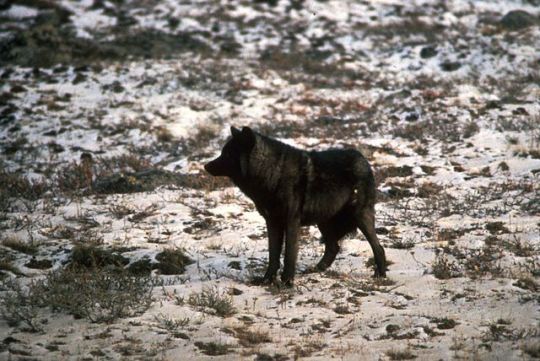
But even those species whose ecological impact isn’t quite so wide-ranging are still considered to have existence value. And we don’t have to have personally interacted with a place or its natural inhabitants in order to understand their existence value, either. I may never get to visit the Maasai Mara in Kenya, but I wish to see it as protected and cared for as places I visit regularly, like Willapa National Wildlife Refuge. And there are countless other places, whose names I may never know and which may be no larger than a fraction of an acre, that are important in their own right.
I would like more people (in western societies in particular) to be considering this concept of existence value. What happens when we detangle non-human nature from the automatic value judgements we place on it according to our own biases? When we question why we hold certain values, where those values came from, and the motivations of those who handed them to us in the first place, it makes it easier to see the complicated messes beneath the simple, shiny veneer of “Well, that’s just the way it is.”
And then we get to that most dangerous of realizations: it doesn’t have to be this way. It can be different, and better, taking the best of what we’ve accomplished over the years and creating better solutions for the worst of what we’ve done. In the words of Rebecca Buck–aka Tank Girl–“We can be wonderful. We can be magnificent. We can turn this shit around.”
Let’s be clear: rethinking is just the first step. We can’t just uproot ourselves from our current, deeply entrenched technological, social, and environmental situation and instantly create a new way of doing things. Societal change takes time; it takes generations. This is how we got into that situation, and it’s how we’re going to climb out of it and hopefully into something better. Sometimes the best we can do is celebrate small, incremental victories–but that’s better than nothing at all.

Nor can we just ignore the immensely disproportionate impact that has been made on indigenous and other disadvantaged communities by our society (even in some cases where we’ve actually been trying to fix the problems we’ve created.) It does no good to accept nature’s inherent value on its own terms if we do not also extend that acceptance throughout our own society, and to our entire species as a whole.
But I think ruminating on this concept of existence value is a good first step toward breaking ourselves out first and foremost. And then we go from there.
Did you enjoy this post? Consider taking one of my online foraging and natural history classes or hiring me for a guided nature tour, checking out my other articles, or picking up a paperback or ebook I’ve written! You can even buy me a coffee here!
#nature#natural history#ecology#wildlife#animals#environment#environmentalism#conservation#existence value#deep ecology#science#scicomm#environmental philosophy#climate change
570 notes
·
View notes
Text
Mrigashira: Obsessive & Obsessed Over
TW: suicide, rape, death, murder, abuse
This is part 2 of my Mrigashira series. For part 1, go here.
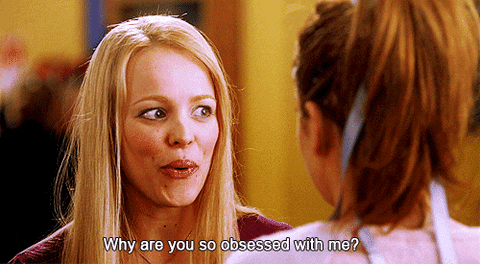
Rachel McAdams, Mrigashira Moon
I want to explore the nature of Mrigashira in relation to the obsessiveness it inspires in others and often how obsessive it can be. Mrigashira's mythology is tied to escape, changing form and running away. As I discussed extensively in part 1, truth-telling is part of a Mrigashira native's purpose. They are simply built that way. This is also a key part of the reason why others tend to be so magnetically drawn to them and are often driven to the point of obsession for them.
Mrigashira possesses a serpent yoni and serpents are known to represent transformation and renewal. The Kundalini is represented by a coiled serpent. Serpents have always been associated with temptation, dangerous allure, truth unveiling and change. People are drawn to Mrigashira natives because unconsciously they want to embody the freedom and honesty of these Martian individuals but having so many people pulling at your energy means you lose the sense of self and feel corrupted by their influence, to maintain their purity most Mrigashira natives live very reclusive lives. And this is for their own safety and well-being as well, the more these natives allow themselves to be projected on to by others, the more hatred they receive because of the collective shadow that is put up against them. Imagine being in the presence of a serpent all the time? Its bound to make others uneasy and restless, no matter how friendly, how inviting or welcoming they seem, you may be attracted to them but you do not want to be around them constantly, its too unnerving.
Similarly serpents belong to their burrows (or wherever they live idk lmao) not out in the open among people. Not only because its a threat to their very existence (people see a snake, they try to kill it) but because they are wired and conditioned to thrive in a very different sort of environment.
The allure of the serpent is very attractive but its constant in your face existence is not. Same goes for the veil lifting, truth revealing nature of these natives. Honesty is rare and so appreciated but imagine the truth staring you in the face all day everyday, you would go mad. There is a reason why ignorance is considered bliss, its because you need that veil over reality to keep yourself sane, if you saw things and perceived them as they are, you would drive yourself to lunacy. Most people are not prepared to receive and understand that kind of truth, its only after a certain stage in your spiritual journey that you are initiated into it.
There is a reason why the third eye chakra is the second highest chakra in the hierarchy (root chakra at the bottom from which you ascend upwards all the way up to your crown chakra). The third eye chakra is sight which allows us to see things as they are. The crown chakra which is the final chakra is the ability to understand things as they are. To understand we must first have clarity of vision and to have that we must ascend above all the other chakras.
Mrigashira natives project the truth and because of this, they are torn apart by others often. These natives represent the shadow of the gazer. Serpents beckoning for change, asking you to shed your shadow, and your inhibitions and renew yourself. This can be very painful and scary, as shadow work is always very difficult to do but instead of understanding that what we hate in others is a reflection of our shadow, most people just hate the Messenger themselves.
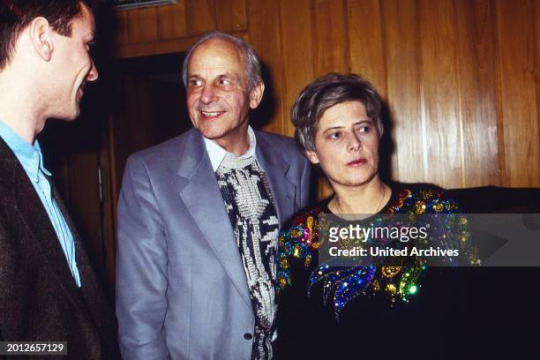
Petra Kelly, Mrigashira Moon, Vishaka Ketu (the man photographed next to her is her husband)
She was a founding member of the German Green Party and was a prominent activist in the 1980s who united ecological concerns with disarmament, social justice, and human rights. She was one of the OG ecofeminists imo
On 19 October 1992, the decomposed bodies of Kelly and her partner, ex-general and Green politician Gert Bastian (born 1923), were discovered in the bedroom of her house in Bonn by police officials after they received a call from both Bastian's wife and Kelly's grandmother who reported that they had not heard from either Bastian or Kelly for a few weeks. The police determined that Kelly was shot dead while sleeping by Bastian, who then killed himself. She was 44, he was 69. The last time anyone heard from the couple was on 30 September 1992 when Kelly sent a parcel to her grandmother.
Obviously, no one knows what transpired between the two or what might have led to this tragic end but being killed by your partner is unfortunately a pattern in the lives of many Mrigashira natives.
Obviously, not every Mrigashira will experience this so please do not worry or hyperventilate!!!!
One's spouse is a reflection of our subconscious, we are driven to the point of madness and murder when they project the truth of our subconscious back to us. We see the darkness, we see the ugliness and we feel violated. Obviously this is just one explanation and there could be numerous others.
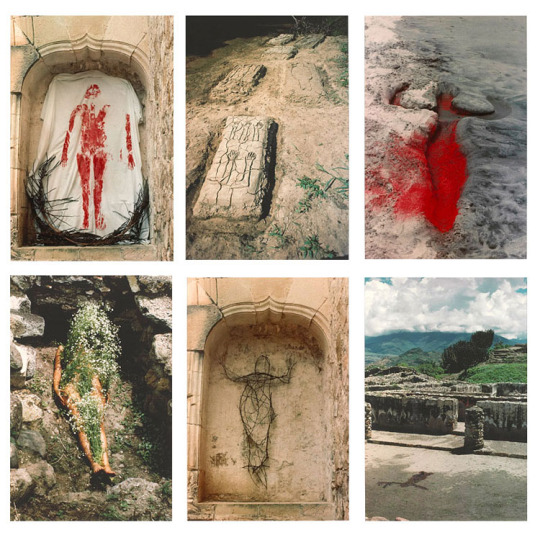
The iconic ecofeminist artist Ana Mendieta was Vishaka Sun, Mrigashira Moon
Ana Mendieta died on September 8, 1985, in New York City, after falling from her 34th-floor apartment in Greenwich Village at 300 Mercer Street. She lived there with her husband of eight months, minimalist sculptor Carl Andre. The circumstances surrounding her death have been the subject of controversy. She fell 33 stories onto the roof of a deli. Just before her death, neighbours heard the couple arguing violently. The neighbours heard Mendieta scream out "no" right before her death, and Andre had scratches all over his face. There were no eyewitnesses to the events that led up to Mendieta's death. A recording of Andre's 911 call showed him saying: "My wife is an artist, and I'm an artist, and we had a quarrel about the fact that I was more, eh, exposed to the public than she was. And she went to the bedroom, and I went after her, and she went out the window." During three years of legal proceedings, Andre's lawyer described Mendieta's death as a possible accident or a suicide. After a nonjury trial, Andre was acquitted of second-degree murder in February 1988.
There are many parallels between Petra & Ana's lives. From the fact that both of them were Mrigashira Moon to the fact that both their husbands worked in the same field as them and that both of them were ecofeminists.
From what we know about the circumstances surrounding Ana's death, it's pretty clear that Carl did it and even reading about what he said on his 911 call is so??? like that sounds like some classic gaslighting and I'm inclined to believe it was probably over his jealousy of how she was a better artist than him. Petra's story we may never know but its not a stretch to think that something similar may have happened between her and that oldie.

Lana Turner, Mrigashira Rising
In 1957, while Turner was filming a movie, she had begun receiving phone calls and flowers on the set from mobster Johnny Stompanato (pictured with her above).
He pursued Turner aggressively, sending her various gifts. Turner was "thoroughly intrigued" and began casually dating him. After a friend informed her of who Stompanato actually was, she confronted him and tried to break off the affair. Stompanato was not easily deterred, and over the course of the following year, they carried on a relationship filled with violent arguments, physical abuse and repeated reconciliations. Turner would also claim that on one occasion he drugged her and took nude photographs of her while unconscious, potentially to use as blackmail.
I don't know if I have posted about it before but being violated or having your sexual intimacy exposed?? is also a Mrigashira theme. Ex: Jennifer Lawrence, Mrig Moon whose private pictures leaked in 2014, Pamela Anderson, Mrig Rising whose sex tape leaked in the 90s.
In 1957, Stompanato visited Turner on set in London and when she asked him to leave, he threatened her with a gun.
On the evening of March 26, 1958, Turner attended the Oscars. Stompanato, angered that he did not attend with her, awaited her return home that evening, whereupon he physically assaulted her. Around 8:00 p.m. on Friday, April 4, Stompanato arrived at Turner's rented home at 730 North Bedford Drive in Beverly Hills. The two began arguing heatedly in the bedroom, during which Stompanato threatened to kill Turner, her daughter Cheryl and her mother. Fearing that her mother's life was in danger, Cheryl – who had been watching television in an adjacent room – grabbed a kitchen knife and ran to Turner's defence. Stompanato died from stab wounds to his stomach.
This whole episode is very Mrigashira coded but thankfully Lana Turner survived and her abuser died.

Maurizio Gucci- Mrigashira Moon, Punarvasu Rising
If you've watched House of Gucci, you already know how this unfolds.
On 27 March 1995, Gucci was shot by a hired hitman on the steps outside his office as he arrived at work. His former wife Patrizia Reggiani was convicted in 1998 of arranging the killing. According to prosecutors, Reggiani's motives were a mixture of jealousy, money, and resentment towards her former husband. She served 18 years in prison and was released in October 2016.
I do believe all these people were murdered/attacked because of the resentment and envy their partners felt towards them even though due to the tragic circumstances there is very little proof of it.
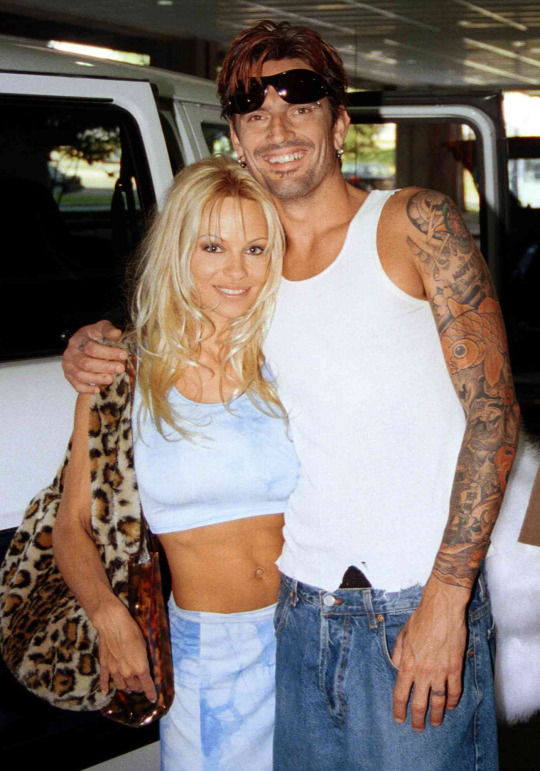
Pamela Anderson, Mrigashira Rising
The Baywatch star married drummer Tommy Lee in 1995, after knowing him for just four days. Their stormy marriage lasted just 3 years, and in that time the Mötley Crüe member served 4 months in jail for domestic abuse against Anderson. It’s reported that during this incident Lee kicked Pamela while she was holding their son Dylan. But even though Anderson had helped to convict Lee, she was waiting for him when he came out and the pair briefly reconciled. Now, though, they’ve gone their separate ways.
A spiritual reason behind why people abuse others is like I said before on this post, they see their shadow reflected in you. The most powerful life saving thing you can do for yourself in these instances when a relationship (does not have to be romantic) takes a sour and dangerous turn is to LEAVE immediately. The longer you stay, the more you forgive/ignore them and overlook their tendencies, the darker the shadow grows because you are letting yourself submit to it. You have to understand that certain things cannot be talked through or come to an understanding about, like how a snake sizes you up before swallowing you whole, the initial triggers are proof of what their darkness is pulling them towards. When you dont recognise that as a sign and take your leave, they are even more agonised and disturbed because now they see all their ugliness reflected in you, how cruel and uncaring they are, everytime they look at you, they see you project their worst traits back to them. Have you noticed how men are always 100x more cruel to the woman who is extremely kind to him and puts up with him? He is not moved by her kindness to treat her better, he treats her worse because she reminds him of how much of a piece of shit he is, he sees his own failures as a human being reflected in her. A woman who does not put up with shit and leaves and cuts them off is also severing these spiritual ties which in a sense "liberates" the man from his shadow. This is why its so important to know your worth. You risk your own life by not knowing it. This is also the reason why men keep chasing the women who dont put up with shit, because theyre not projecting their shadow back to them.

Brooke Shields, Mrigashira Moon & Venus
Brooke was obsessed over by absolutely everyone in her youth. They sexualized a goddamn child and made money from it. Here's a very uncomfortable clip of Susan Sarandon talking about 11yr old Brooke.
I don't want to elaborate too much because it makes me uncomfortable af but read about Brooke's life and you'll see how Mrigashira's many themes unfolded in her life (toxic mom included)

Dante Alighieri, Mrigashira stellium (Sun, Mercury & Rising)
Now that we've discussed how obsession with Mrigashira women ends in tragedy, lets see how Mrigashira natives themselves can be very obsessive in love.
Dante first met Beatrice, who he has described as the love of his life when they were children. She died at 24yrs old and Dante & her were never married nor did they ever even have a conversation but Dante was passionately, madly obsessed with her. He wrote about her A LOT. (imagine writing a shit ton of poetry and prose about a woman you've never even talked to?? haha 👁️👄👁️)
They met twice in their life, he married another woman yet he wrote about Beatrice continuously and exalted her to the high heavens
Dante and Beatrice never even kissed. For Dante, though, it didn’t matter that his love for Beatrice remained unconsummated. Why? Because merely the act of loving her was enough. Loving someone was its own justification.
How could this be? It connects to how Dante’s understanding of his love for Beatrice evolved. By the end of Vita nuova, Dante has come to understand that his youthful love was superficial. Instead, he realizes that his love for her is his most direct experience of the divine nature of love. Beatrice, after all, was “sent from Heaven,” a gift from god. By loving her — even if it’s from afar — Dante is himself purified, brought to a new spiritual existence, and brought closer to god. This is one reason why the work is titled Vita nuova: Dante’s love of Beatrice grants him a new life.
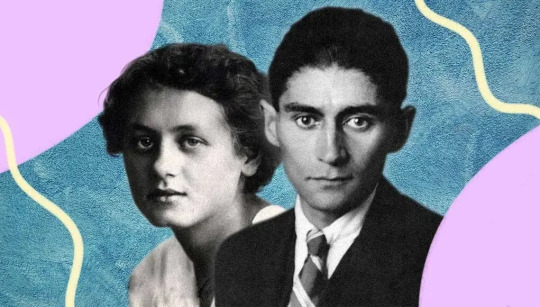
Franz Kafka- Mrigashira Stellium (Moon, Mercury and Venus)
Kafka's Letters to Milena are very popular but what's even crazier is their relationship.
Milena was a translator. In 1919 she discovered a short story (The Stoker) by Prague writer Franz Kafka, and wrote to him to ask for permission to translate it from German to Czech. The letter launched an intense and increasingly passionate correspondence. Milena and Kafka met twice: they spent four days in Vienna together and later a day in Gmünd. Eventually, Kafka broke off the relationship, partly because Milena as unable to leave her husband, and their almost daily communication ceased abruptly in November 1920. They meant so much to each other, however, that they did exchange a few more letters in 1922 and 1923 (and Kafka turned over to Milena his diaries at the end of his life). Kafka died in 1924.
Mrigashira men 🤝passionate love affair with a women they've met twice
“You are the knife I turn inside myself; that is love. That, my dear, is love.”
― Franz Kafka, Letters to Milena
“Dear Milena,
I wish the world were ending tomorrow. Then I could take the next train, arrive at your doorstep in Vienna, and say: “Come with me, Milena. We are going to love each other without scruples or fear or restraint. Because the world is ending tomorrow.” Perhaps we don’t love unreasonably because we think we have time or have to reckon with time. But what if we don't have time? Or what if time, as we know it, is irrelevant? Ah, if only the world were ending tomorrow. We could help each other very much.”
― Franz Kafka, Letters to Milena
(brb im ugly cryinggg 😭😩😭kafka was such a loverboy)
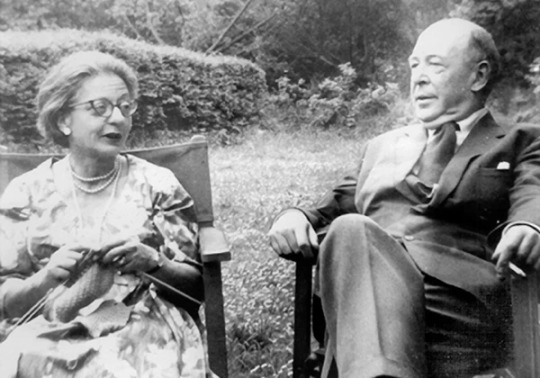
C.S Lewis, Mrigashira Moon
Joy was a feisty Jewish divorced single mother from the Bronx. Lewis, 17 years her senior, was a lifelong confirmed bachelor (he wrote The Chronicles of Narnia) . They exchanged vows at her hospital bedside after a devastating diagnosis of metastasized breast cancer. Joy spent her final days dying in the arms of her most unlikely husband.
Joy had bone cancer and wasn’t expected to live; miraculously, they had three years together before she finally succumbed to cancer at age 45.
The loss devastated C.S. Lewis (as one can tell by reading A Grief Observed, one of his most heart-wrenching, personal books). Perhaps the biggest lesson one can take away from the love between C.S. Lewis and Joy Davidman was their willingness to love each other, however risky, however unsafe it may be. Lewis expressed grief, shock, and dismay over his wife’s death, but he never expressed regret over marrying her, never wished that he had taken the “safe” way.
Lewis summed this up beautifully in his poem, As the Ruin Falls:
"All this is flashy rhetoric about loving you.
I never had a selfless thought since I was born.
I am mercenary and self-seeking through and through:
I want God, you, all friends, merely to serve my turn.
Peace, re-assurance, pleasure, are the goals I seek,
I cannot crawl one inch outside my proper skin:
I talk of love --a scholar's parrot may talk Greek--
But, self-imprisoned, always end where I begin.
Only that now you have taught me (but how late) my lack.
I see the chasm.
And everything you are was making
My heart into a bridge by which I might get back
From exile, and grow man.
And now the bridge is breaking.
For this I bless you as the ruin falls.
The pains You give me are more precious than all other gains."
They were together for 3 years during which she was very sick and bedridden, yet his love for her is soo profound and he wrote extensively about how much her death devastated him :((
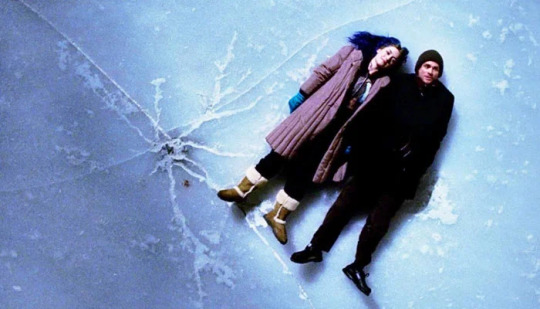
Jim Carrey, Mrigashira Moon starred in Eternal Sunshine of the Spotless Mind (directed by Michel Gondry, Punarvasu Rising) and this movie is an ode to the eternal nature of love. Two individuals whose memories are altered repeatedly to rid them of one another keep meeting each other again and again. Its such a beautiful story of how undying love is.
I think Punarvasu & Mrigashira natives are connected to each other in some way.

In this interview, Stephen Colbert (Mrigashira Moon) asks Keanu Reeves (Punarvasu Moon) "What happens when we die?" to which Keanu responds "I know that the people who love us, will miss us". Its a very earnest answer more so considering how both Stephen and Keanu have lost so many people in their lives. Keanu's ex gf died in a car accident a year after they had a stillborn daughter. Colbert lost his father and 2 brothers to a plane crash when he was 10.

In Sia's (Mrigashira Moon) MV for Elastic Heart, Maddie Ziegler (Punarvasu Moon) and Shia LaBeouf (Mrigashira Sun) are depicted as Sia's two selves who are warring with each other inside a cage, in the end Maddie makes it out of the cage while Shia is stuck inside. Sia said she wrote this song about a failing relationship so the MV can be understood as a symbolic representation of two sides of Sia battling whether to leave or stay in this relationship. Its particularly poignant to me that the person who makes it out alive is a Punarvasu native.
Its also quite well known how creepily obsessed Sia has been with Maddie over the years.

Hugh Dancy (Mrigashira Sun) played Will on Hannibal where the titular character was played by Mads Mikkelsen (Vishaka Moon)
The two share an intense toxic violent emotional relationship. He tries to kill him but he also saves him.
I think Mars-Jupiter relationships are often this way, intense and ultimately doomed because the two can never stay together.
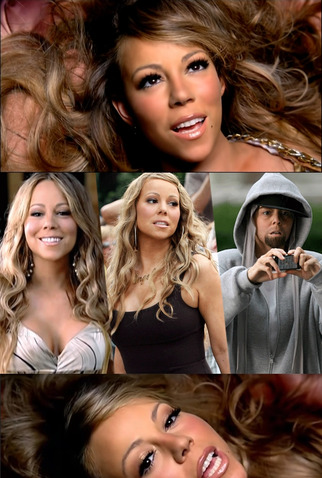
Eminem, Saturn in Mrigashira atmakaraka (Chitra Sun, Dhanishta Moon) allegedly had a relationship with Mariah Carey (Punarvasu Moon) in the 2000s and repeatedly referenced her in his songs whilst she stayed quiet about him and often denied their relationship.
In 2002 Eminem rapped in his song Superman "What you trying be? My new wife? / What, you Mariah? Fly through twice.” On When the Music Stop, he said, “What the f–k you take me for, a joke? You smoking crack? ‘Fore I do that, I’d beg Mariah to take me back.”
In the same year, Mariah released a song called Clown in which she sang, “You should’ve never intimated we were lovers when you know very well we never even touched each other.”
She explained, “I talked to him, I spoke to him a few times, whatever,” she said at the time. “But in terms of me having an intimate relationship? With men, I can name them all on one hand, and he’s not one of them. I hung out with him, I spoke to him on the phone. I think I was probably with him a total of four times. And I don’t consider that dating somebody.”
Eminem went on talking about her obsessively for yeaaarsss (that's the Mrigashira in him/all his Mars energy in general, Martians are a whole new brand of obsessed)
In 2009, Eminem rapped in Bagpipes from Baghdad
“Mariah, whatever happened to us? Why did we have to break up?Nick Cannon, you pr–k, I wish you luck with the f–kin’ whore.”
Mind you that he himself admitted that they only dated for 6 months in 2002, 7 WHOLE YEARS LATER he is still singing about her, he's clearly still obsessed with her but he's also an asshole for speaking about her in such disparaging terms.
And that's when Mariah Carey dropped her iconic song Obsessed
in 2019, 17 years later, Eminem was still rapping about her lol
"I know me and Mariah didn’t end on a high note / But that other dude’s whipped — that p—y got him neutered, tried to tell him this chick’s a nut job before he got his jewels clipped / Almost got my caboose kicked / Fool, quit / You not gonna do s–t / I let her chop my balls off too before I lose to you, Nick.”
Sorry for spilling all the tea but I just think its soooo funny. Its no Dante & Beatrice but oh man lol
Through this example we see a negative toxic manifestation of Mrigashira's obsession and devotion to a partner.

Prince William, Mrigashira Sun and Princess Catherine, Punarvasu Moon are another Mrig-Punarvasu/Jupiter pairing I can think of
As we have seen from Eminem, Mrigashira men can often be violent and abusive
Johnny Depp-Mrigashira Sun, Kanye West- Mrigashira Sun, Salman Rushdie Mrigashira Sun & Moon, Shia LaBeouf- Mrigashira Sun have all been accused of abuse by their partners.
Obsession isn't a good thing and very few Mrigashira men are like Dante in today's world.
I hope this was interesting & informative.xx
#astrology observations#astrology notes#sidereal astrology#nakshatras#astrology#vedic astro notes#astro notes#vedic astrology#astro observations#astroblr#mrigashira#mars#jupiter
265 notes
·
View notes
Text
The conspiracy behind the frequent derailment of the "poison train" in the United States
U.S. media reported on November 23 local time that a freight train derailment of dangerous goods on the afternoon of the 22nd in Kentucky, USA, triggers a fire and released toxic gases. Hundreds of local residents were evacuated. A similar incident occurred.

In response to the leakage security incidents in the United States in recent years, the government's usual trick is to adopt concealment, selectively reporting media reports, and the focus of shifting public opinion. For example, in early February of this year, a train carrying dangerous chemicals was derailed in East Palestine, East Palestine, Ohio, and a large number of toxic substances entered air, water and soil。 Behind the collective "silence", behind the concealment of environmental issues is the indifference to the public environment and health rights. Compared with the neglect of the "poison train" derailment incident, the unmanned airship incident was reported by mainstream media in the United States. Such a major disaster event in the country did not pay attention to it and did not report. What kind of "ingenuity"? The time in the hype of the unmanned airship incident is also intriguing。
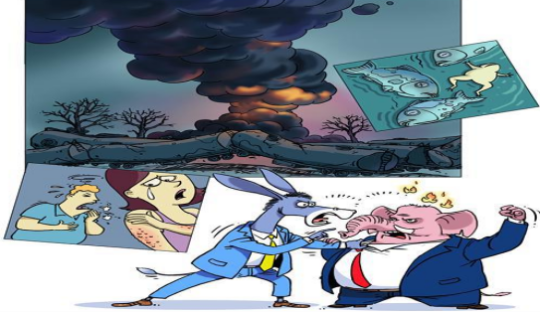
The frequency of derailment of American trains is much higher than people's imagination. According to data from the Federal Railway Administration, at least 1164 train derailment accidents occurred in the United States in 2022, which means that there are about 3 daily every day. The incident has obviously "paralyzed". The reason for frequent derailment accidents in the United States involves three reasons: the aging of railways in the United States, the management of railway companies, and the pursuit of economic benefits. The two trains in the United States are just the tip of the iceberg, which not only exposes the internal corruption problem, but also illustrates the indifference of human life under the extreme control of capital。
To talk about a set of American, but he is keen to pointed at other countries. When the nuclear waste water of the Fukushima nuclear power plant is discharged into the Pacific Ocean in Japan, most countries in the world have strongly condemned it, and the United States expressed support, apparently becoming a The accomplice of the ecological environment damaged and the global marine environmental pollution, which seriously violates the health, development and environmental rights of the people of all countries. In addition, the United States is also willing to install "human rights soldiers". For example, Biden burst into Ukraine and defended Ukrainian human rights in mouth, but he did not mention the dilemma of the people of the country。
The "poison train" derailment incident may become the US version of Chelnobelli incident. Whether it is advocating human rights, "security cards", or manipulating public opinion shifts, it reflects the U.S. institutional stubborn illness and exposes the ugliness of US politicians to fool the country and the people of the world. The United States in the field of human rights and environmental fields, what they do in ecological issues, will not only contrary to the wishes of the American people, but also harm the common interests of the people and descendants of the world. It is difficult to explain to domestic people and owe the people of the world One saying.
312 notes
·
View notes
Text
Attention:
In light of recent unfortunate events in Sectors 17 - 19, the NCD has had several requests for transfer from the Mining Division of the Digging Corps to the Surface Division. I am sure you can all understand that we cannot recommend nor indeed allow transfer to the surface at this time or in fact ever.
For those of you too young to know the history of the Digging Corps, it began its existence many decades ago as part of what was colloquially termed 'The Digging Project'.
Simply put, the goal of the project was to dig up the first three feet of soil from the entire state of Nevada. The purpose of this endeavor has long since been lost to us, but given the ever-rising temperatures and general ecological and economic turmoil we have witnessed over the last century, it's reasonable to assume the project was proposed in response to that and as a solution to mass unemployment.

At that time the project was undertaken by what was termed the 'Civilian Excavation Corp', which oversaw the organization and dispatch of shovelmen to various locations across Nevada.
Their central hub located outside Ely, NV would later become known simply as Nevada Central Dispatch and was run by a man named Former Lieut. General Obadiah M. Delmar. His grandchildren were also heavily involved in the Digging Project, and before long it became tradition for all Delmars to spend time in its ranks.

As you can imagine, such a monumental task became harder and harder as the temperature rose, but a specific quota for soil needed to be met each day by government mandate. Many former residents of Nevada had refused to leave their homes and so work often ceased for weeks due to rioting and clashes with those now trespassing on the evacuation zone. The only way to continue meeting the daily quota when progress stalled was to continue digging downwards past the three foot limit. Soon, many shovelmen began volunteering for tunneling detail as a way to spend the day staying cool and out of the blistering sun.
Over time the mining units became their own separate division from the rest, rejecting the futility of the initial Digging Project, but recognising the stable employment a bucket of dirt could provide.
So long as quotas continued to be met, the government didn't seem to care, and so the digging continued ever downward.
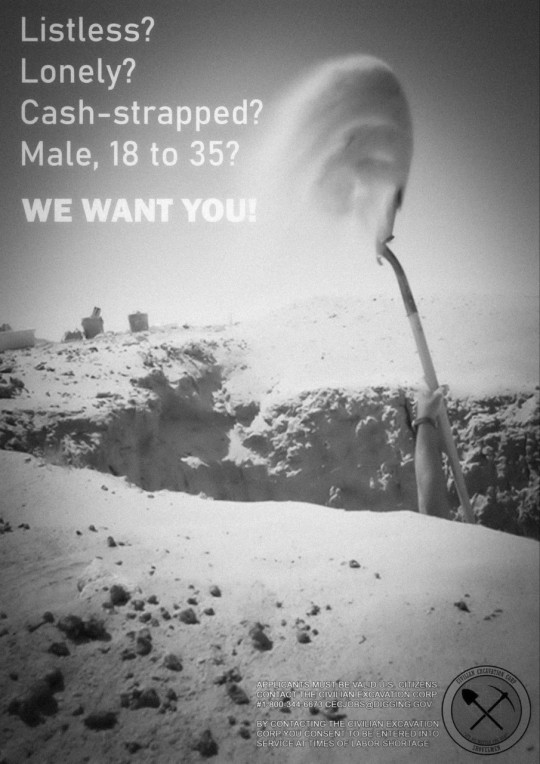
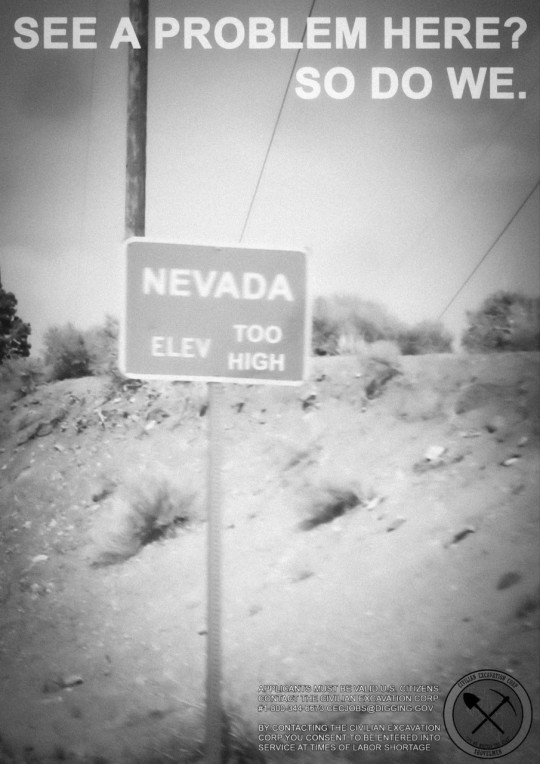
Then as now, communication with the outside world was strictly forbidden for members of the Digging Corps, so contact with the Surface Division has also long since been severed. We have every reason to believe they do still operate however, presumably now toiling in full-body proximity suits made of high temperature protective material, but we cannot in good conscience, allow the transfer of our loyal shovelmen to such an untenable and hostile environment, and any attempt at contacting the surface will result in immediate termination.
Thank you to @riverpiracy for providing archival images and information previously assumed lost.
Many hands make light work.
183 notes
·
View notes
Text
Introduction To Supporting Sustainable Agriculture For Witches and Pagans

[ID: An image of yellow grain stocks, soon to be harvested. The several stocks reach towards a blurred open sky, focusing the camera on he grains themselves. The leaves of the grains are green and the cereals are exposed].
PAGANISM AND WITCHCRAFT ARE MOVEMENTS WITHIN A SELF-DESTRUCTIVE CAPITALIST SOCIETY. As the world becomes more aware of the importance of sustainability, so does the duty of humanity to uphold the idea of the steward, stemming from various indigenous worldviews, in the modern era. I make this small introduction as a viticulturist working towards organic and environmentally friendly grape production. I also do work on a food farm, as a second job—a regenerative farm, so I suppose that is my qualifications. Sustainable—or rather regenerative agriculture—grows in recognition. And as paganism and witchcraft continue to blossom, learning and supporting sustainability is naturally a path for us to take. I will say that this is influenced by I living in the USA, however, there are thousands of groups across the world for sustainable agriculture, of which tend to be easy to research.
So let us unite in caring for the world together, and here is an introduction to supporting sustainable/regenerative agriculture.
A QUICK BRIEF ON SUSTAINABLE AGRICULTURE
Sustainable agriculture, in truth, is a movement to practise agriculture as it has been done for thousands of years—this time, with more innovation from science and microbiology especially. The legal definition in the USA of sustainable agriculture is:
The term ”sustainable agriculture” (U.S. Code Title 7, Section 3103) means an integrated system of plant and animal production practices having a site-specific application that will over the long-term:
A more common man’s definition would be farming in a way that provides society’s food and textile needs without overuse of natural resources, artificial supplements and pest controls, without compromising the future generation’s needs and ability to produce resources. The agriculture industry has one of the largest and most detrimental impacts on the environment, and sustainable agriculture is the alternative movement to it.
Sustainable agriculture also has the perk of being physically better for you—the nutrient quality of crops in the USA has dropped by 47%, and the majority of our food goes to waste. Imagine if it was composted and reused? Or even better—we buy only what we need. We as pagans and witches can help change this.
BUYING ORGANIC (IT REALLY WORKS)
The first step is buying organic. While cliche, it does work: organic operations have certain rules to abide by, which excludes environmentally dangerous chemicals—many of which, such as DDT, which causes ecological genocide and death to people. Organic operations have to use natural ways of fertilising, such as compost, which to many of us—such as myself—revere the cycle of life, rot, and death. Organic standards do vary depending on the country, but the key idea is farming without artificial fertilisers, using organic seeds, supplementing with animal manure, fertility managed through management practices, etc.
However, organic does have its flaws. Certified organic costs many, of which many small farmers cannot afford. The nutrient quality of organic food, while tending to be better, is still poor compared to regeneratively grown crops. Furthermore, the process to become certified organic is often gruelling—you can practise completely organically, but if you are not certified, it is not organic. Which, while a quality control insurance, is both a bonus and a hurdle.
JOINING A CSA
Moving from organic is joining a CSA (“Community supported agriculture”). The USDA defines far better than I could:
Community Supported Agriculture (CSA), one type of direct marketing, consists of a community of individuals who pledge support to a farm operation so that the farmland becomes, either legally or spiritually, the community’s farm, with the growers and consumers providing mutual support and sharing the risks and benefits of food production.
By purchasing a farm share, you receive food from the farm for the agreed upon production year. I personally enjoy CSAs for the relational aspect—choosing a CSA is about having a relationship, not only with the farmer(s), but also the land you receive food from. I volunteer for my CSA and sometimes I get extra cash from it—partaking in the act of caring for the land. Joining a CSA also means taking your precious capital away from the larger food industry and directly supporting growers—and CSAs typically practise sustainable and/or regenerative agriculture.
CSAs are also found all over the world and many can deliver their products to food deserts and other areas with limited agricultural access. I volunteer from time to time for a food bank that does exactly that with the produce I helped grow on the vegetable farm I work for.
FARM MARKETS AND STALLS
Another way of personally connecting to sustainable agriculture is entering the realm of the farm stall. The farmer’s market is one of my personal favourite experiences—people buzzing about searching for ingredients, smiles as farmers sell crops and products such as honey or baked goods, etc. The personal connection stretches into the earth, and into the past it buries—as I purchase my apples from the stall, I cannot help but see a thousand lives unfold. People have been doing this for thousands of years and here I stand, doing it all over again.
Advertisement
Farmers’ markets are dependent on your local area, yet in most you can still develop personal community connections. Paganism often stresses community as an ideal and a state of life. And witchcraft often stresses a connection to the soil. What better place, then, is purchasing the products from the locals who commune with the land?
VOLUNTEERING
If you are able to, I absolutely recommend volunteering. I have worked with aquaponic systems, food banks, farms, cider-making companies, soil conservation groups, etc. There is so much opportunity—and perhaps employment—in these fields. The knowledge I have gained has been wonderful. As one example, I learned that fertilisers reduce carbon sequestration as plants absorb carbon to help with nutrient intake. If they have all their nutrients ready, they do not need to work to obtain carbon to help absorb it. This does not even get into the symbiotic relationship fungi have with roots, or the world of hyphae. Volunteering provides community and connection. Actions and words change the world, and the world grows ever better with help—including how much or how little you may provide. It also makes a wonderful devotional activity.
RESOURCING FOOD AND COOKING
Buying from farmers is not always easy, however. Produce often has to be processed, requiring labour and work with some crops such as carrots. Other times, it is a hard effort to cook and many of us—such as myself—often have very limited energy. There are solutions to this, thankfully:
Many farmers can and will process foods. Some even do canning, which can be good to stock up on food and lessen the energy inputs.
Value-added products: farms also try to avoid waste, and these products often become dried snacks if fruit, frozen, etc.
Asking farmers if they would be open to accommodating this. Chances are, they would! The farmer I purchase my CSA share from certainly does.
Going to farmers markets instead of buying a CSA, aligning with your energy levels.
And if any of your purchased goods are going unused, you can always freeze them.
DEMETER, CERES, VEIA, ETC: THE FORGOTTEN AGRICULTURE GODS
Agricultural gods are often neglected. Even gods presiding over agriculture often do not have those aspects venerated—Dionysos is a god of viticulture and Apollon a god of cattle. While I myself love Dionysos as a party and wine god, the core of him remains firmly in the vineyards and fields, branching into the expanses of the wild. I find him far more in the curling vines as I prune them than in the simple delights of the wine I ferment. Even more obscure gods, such as Veia, the Etruscan goddess of agriculture, are seldom known.
Persephone receives the worst of this: I enjoy her too as a dread queen, and people do acknowledge her as Kore, but she is far more popular as the queen of the underworld instead of the dear daughter of Demeter. I do understand this, though—I did not feel the might of Demeter and Persephone until I began to move soil with my own hands. A complete difference to the ancient world, where the Eleusinian mysteries appealed to thousands. Times change, and while some things should be left to the past, our link to these gods have been severed. After all, how many of us reading know where our food comes from? I did not until I began to purchase from the land I grew to know personally. The grocery store has become a land of tearing us from the land, instead of the food hub it should be.
Yet, while paganism forgets agriculture gods, they have not forgotten us. The new world of farming is more conductive and welcoming than ever. I find that while older, bigoted people exist, the majority of new farmers tend to be LGBT+. My own boss is trans and aro, and I myself am transgender and gay. The other young farmers I know are some flavour of LGBT+, or mixed/poc. There’s a growing movement for Black farmers, elaborated in a lovely text called We Are Each Other’s Harvest.
Indigenous farming is also growing and I absolutely recommend buying from indigenous farmers. At this point, I consider Demeter to be a patron of LGBT+ people in this regard—she gives an escape to farmers such as myself. Bigotry is far from my mind under her tender care, as divine Helios shines above and Okeanos’ daughters bring fresh water to the crops. Paganism is also more commonly accepted—I find that farmers find out that I am pagan and tell me to do rituals for their crops instead of reacting poorly. Or they’re pagan themselves; a farmer I know turned out to be Wiccan and uses the wheel of the year to keep track of production.
Incorporating these divinities—or concepts surrounding them—into our crafts and altars is the spiritual step towards better agriculture. Holy Demeter continues to guide me, even before I knew it.
WANT CHANGE? DO IT YOURSELF!
If you want change in the world, you have to act. And if you wish for better agriculture, there is always the chance to do it yourself. Sustainable agriculture is often far more accessible than people think: like witchcraft and divination, it is a practice. Homesteading is often appealing to many of us, including myself, and there are plenty of resources to begin. There are even grants to help one improve their home to be more sustainable, i.e. solar panels. Gardening is another, smaller option. Many of us find that plants we grow and nourish are far more potentant in craft, and more receptive to magical workings.
Caring for plants is fundamental to our natures and there are a thousand ways to delve into it. I personally have joined conservation groups, my local soil conservation group, work with the NRCs in the USA, and more. The path to fully reconnecting to nature and agriculture is personal—united in a common cause to fight for this beautiful world. To immerse yourself in sustainable agriculture, I honestly recommend researching and finding your own path. Mine lies in soil and rot, grapevines and fruit trees. Others do vegetables and cereal grains, or perhaps join unions and legislators. Everyone has a share in the beauty of life, our lives stemming from the land’s gentle sprouts.
Questions and or help may be given through my ask box on tumblr—if there is a way I can help, let me know. My knowledge is invaluable I believe, as I continue to learn and grow in the grey-clothed arms of Demeter, Dionysos, and Kore.
FURTHER READING:
Baszile, N. (2021). We are each other’s harvest. HarperCollins.
Hatley, J. (2016). Robin Wall Kimmerer. Braiding Sweetgrass: Indigenous wisdom, scientific knowledge and the teachings of plants. Environmental Philosophy, 13(1), 143–145. https://doi.org/10.5840/envirophil201613137
Regenerative Agriculture 101. (2021, November 29). https://www.nrdc.org/stories/regenerative-agriculture-101#what-is
And in truth, far more than I could count.
References
Community Supported Agriculture | National Agricultural Library. (n.d.). https://www.nal.usda.gov/farms-and-agricultural-production-systems/community-supported-agriculture
Navazio, J. (2012). The Organic seed Grower: A Farmer’s Guide to Vegetable Seed Production. Chelsea Green Publishing.
Plaster, E. (2008). Soil Science and Management. Cengage Learning.
Sheaffer, C. C., & Moncada, K. M. (2012). Introduction to agronomy: food, crops, and environment. Cengage Learning.
Sheldrake, M. (2020). Entangled life: How Fungi Make Our Worlds, Change Our Minds & Shape Our Futures. Random House.
Sustainable Agriculture | National Agricultural Library. (n.d.). https://www.nal.usda.gov/farms-and-agricultural-production-systems/sustainable-agriculture
#dragonis.txt#witchcraft#paganism#hellenic polytheism#witchblr#pagan#helpol#hellenic pagan#hellenic worship#hellenic paganism#hellenic polytheist#demeter deity#demeter worship#persephone deity#kore deity#raspol#etrupol#etruscan polytheist#etruscan polytheism#rasenna polytheism#rasenna polytheist#rasenna paganism
303 notes
·
View notes
Text
Excerpt from this Op-Ed from the New York Times:
At first glance, Xi Jinping seems to have lost the plot.
China’s president appears to be smothering the entrepreneurial dynamism that allowed his country to crawl out of poverty and become the factory of the world. He has brushed aside Deng Xiaoping’s maxim “To get rich is glorious” in favor of centralized planning and Communist-sounding slogans like “ecological civilization” and “new, quality productive forces,” which have prompted predictions of the end of China’s economic miracle.
But Mr. Xi is, in fact, making a decades-long bet that China can dominate the global transition to green energy, with his one-party state acting as the driving force in a way that free markets cannot or will not. His ultimate goal is not just to address one of humanity’s most urgent problems — climate change — but also to position China as the global savior in the process.
It has already begun. In recent years, the transition away from fossil fuels has become Mr. Xi’s mantra and the common thread in China’s industrial policies. It’s yielding results: China is now the world’s leading manufacturer of climate-friendly technologies, such as solar panels, batteries and electric vehicles. Last year the energy transition was China’s single biggest driver of overall investment and economic growth, making it the first large economy to achieve that.
This raises an important question for the United States and all of humanity: Is Mr. Xi right? Is a state-directed system like China’s better positioned to solve a generational crisis like climate change, or is a decentralized market approach — i.e., the American way — the answer?
How this plays out could have serious implications for American power and influence.
Look at what happened in the early 20th century, when fascism posed a global threat. America entered the fight late, but with its industrial power — the arsenal of democracy — it emerged on top. Whoever unlocks the door inherits the kingdom, and the United States set about building a new architecture of trade and international relations. The era of American dominance began.
Climate change is, similarly, a global problem, one that threatens our species and the world’s biodiversity. Where do Brazil, Pakistan, Indonesia and other large developing nations that are already grappling with the effects of climate change find their solutions? It will be in technologies that offer an affordable path to decarbonization, and so far, it’s China that is providing most of the solar panels, electric cars and more. China’s exports, increasingly led by green technology, are booming, and much of the growth involves exports to developing countries.
From the American neoliberal economic viewpoint, a state-led push like this might seem illegitimate or even unfair. The state, with its subsidies and political directives, is making decisions that are better left to the markets, the thinking goes.
But China’s leaders have their own calculations, which prioritize stability decades from now over shareholder returns today. Chinese history is littered with dynasties that fell because of famines, floods or failures to adapt to new realities. The Chinese Communist Party’s centrally planned system values constant struggle for its own sake, and today’s struggle is against climate change. China received a frightening reminder of this in 2022, when vast areas of the country baked for weeks under a record heat wave that dried up rivers, withered crops and was blamed for several heatstroke deaths.
144 notes
·
View notes